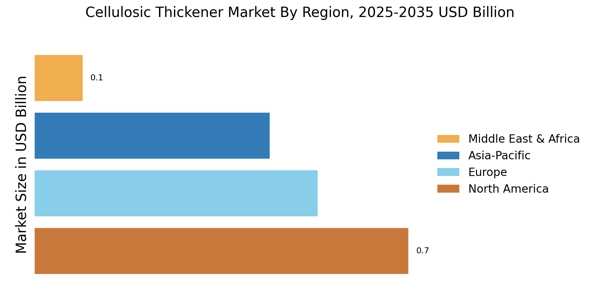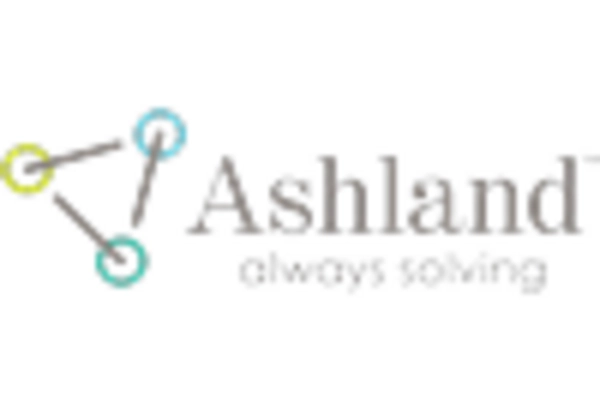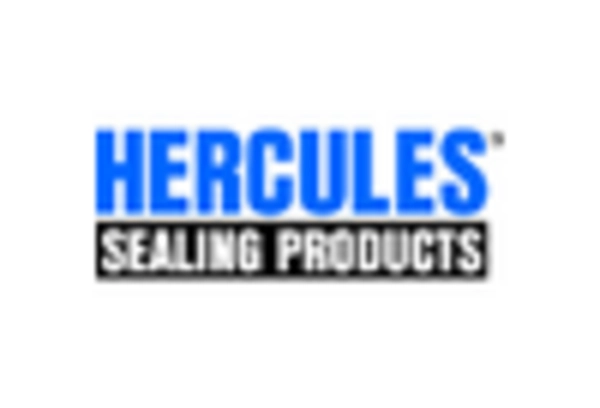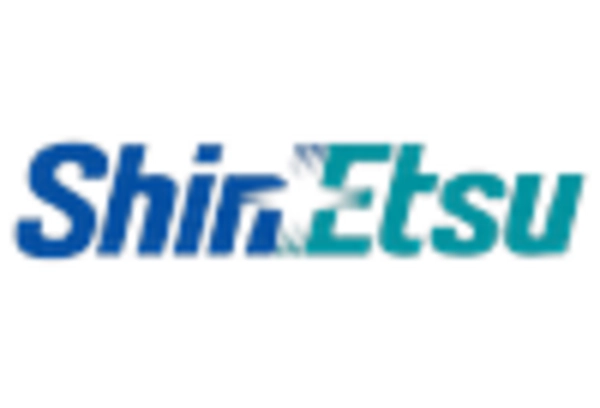Rising Demand in Food Industry
The Cellulosic Thickener Market experiences a notable surge in demand from the food sector, driven by the increasing consumer preference for natural and clean-label products. Cellulosic thickeners, derived from plant sources, align with the growing trend towards healthier food options. In 2025, the food industry is projected to account for a substantial share of the market, as manufacturers seek to enhance texture and stability in various food applications. This trend is further supported by regulatory bodies advocating for the reduction of synthetic additives, thereby propelling the adoption of cellulosic thickeners. The versatility of these thickeners in sauces, dressings, and dairy products underscores their importance in meeting consumer expectations for quality and safety.
Growth in Personal Care Products
The Cellulosic Thickener Market is significantly influenced by the expanding personal care sector, where the demand for natural and effective thickening agents is on the rise. As consumers increasingly gravitate towards products that are free from harmful chemicals, cellulosic thickeners offer a safe alternative for formulating lotions, creams, and gels. The personal care market is anticipated to witness a compound annual growth rate of approximately 5% through 2025, with cellulosic thickeners playing a crucial role in achieving desired product viscosity and stability. This growth is indicative of a broader shift towards sustainable and eco-friendly formulations, which aligns with consumer values and preferences.
Sustainability and Eco-Friendly Trends
The Cellulosic Thickener Market is significantly impacted by the increasing emphasis on sustainability and eco-friendly practices across various sectors. As industries strive to reduce their environmental footprint, the demand for biodegradable and renewable thickeners is on the rise. Cellulosic thickeners, being derived from natural cellulose, align well with these sustainability goals. In 2025, it is expected that a considerable portion of the market will be driven by companies seeking to replace synthetic thickeners with more sustainable alternatives. This shift not only meets regulatory requirements but also resonates with environmentally conscious consumers, thereby enhancing brand loyalty and market competitiveness.
Technological Innovations in Production
The Cellulosic Thickener Market is witnessing a transformation due to ongoing technological advancements in production processes. Innovations in extraction and processing techniques are enhancing the efficiency and quality of cellulosic thickeners, making them more accessible to manufacturers. These advancements are likely to reduce production costs and improve the functional properties of thickeners, thereby expanding their application range. As companies invest in research and development, the market is expected to benefit from the introduction of novel formulations that cater to specific industry needs. This trend indicates a proactive approach to meeting the evolving demands of consumers and industries alike.
Increased Use in Pharmaceutical Applications
The Cellulosic Thickener Market is poised for growth due to the rising utilization of these thickeners in pharmaceutical formulations. As the healthcare sector continues to evolve, there is a growing need for effective excipients that enhance the stability and delivery of active ingredients. Cellulosic thickeners are particularly valued for their ability to improve the texture and consistency of liquid medications, making them more palatable for patients. The pharmaceutical industry is projected to expand at a steady rate, with cellulosic thickeners becoming integral in the development of syrups, suspensions, and topical formulations. This trend reflects a broader commitment to improving patient compliance and satisfaction.


















Leave a Comment